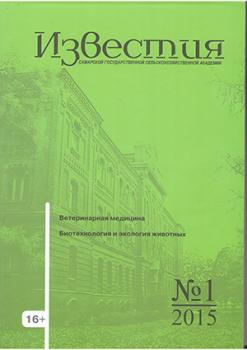Samara, Russian Federation
p.g.t. Ust'-Kinel'skiy, Samara, Russian Federation
The purpose of research is to develop methods of increasing and stabilization of wheat production, providing improved phytosanitary condition of crops and crop structure in the conditions of Northern Kazakhstan. Experimental studies were conducted in Kostanai Scientific Research Institute of Agriculture (Republic of Kazakhstan). In the experiment evaluated wheat predecessors in field crop rotations with different structure and set of crops (legumes, oilseeds). On average for the period 2009-2014 less clogged were the first crops of wheat after a couple more clogged – wheat crops for peas and oilseed rape. When sowing the first crop of wheat after the pair number of annual weeds during the growing season has increased by an average of 3.3 times, perennial – 1.5 times. In the case of wheat after pea content of annual weeds has increased 1.4 times, the amount of perennial weeds on average remained at the same level. When sowing wheat after oilseed rape on the period of harvesting the number of annual weeds on average increased by 1.6 times, the amount of perennial weeds decreased by 2.0 times. Thus, the level of infestation of crops the main grain of spring wheat culture in the beginning of the growing season was determined by how effective weed control in crops of previous crops, and at the end of the growing season, before the harvest, and still protect the system in the year of sowing. In terms of the productivity of the average for 2009-2014, research has proved better option sowing wheat crop after the first couple. When plant density of 195 pcs./m2 was formed 294 productive stems, ie, productive tillering was 1.5, with the number of grains per ear – 24.7 pc. and mass of 1000 seeds – 32.3 g. Good crop structure indicators wheat variations showed after peas and oilseed rape. Productive tillering in these cases was 1.4, the mass of 1000 seeds after the pea – 31.9 g, after oilseed rape – 32.0 g.
wheat, predecessor, rape, debris, structure, yield
1. Loshakov, V. G. Crop rotation is the basis of environmentally friendly farming systems. - Cheboksary : LLC «Polygraph», 2010. - P. 161-166.
2. Titov, Y. N. Formation of quality of grain of spring wheat depending on predecessors // Bulletin of the Altai State Agrarian University. - 2007. - №2(28). - P. 11-15.
3. Maltsev, N. N. Effect of different processing systems pure soils the fertility and productivity of black earth soils of Western Zabaikalye : dis. ... cand. of agricultural sciences : 06.01.01 / Maltsev Nikolai Nikolaevich. - Ulan-Ude, 2009. - 146 p.
4. De Cara, Stéphane. Economic Analysis of Summer Fallow Management to Reduce Take-All Disease and N Leaching in a Wheat Crop Rotation / Stéphane De Cara, Florence Jacquet, Arnaud Reynaud, Gaël Goulevant, Marie-Hélène Jeuffroy, Françoise Montfort, Philippe Lucas // Environmental Modeling & Assessment. - 2011. - Vol. 16, Iss. 1. - P. 91-105.
5. Lamprecht , S. C. Effect of crop rotation on crown rot and the incidence of Fusarium pseudograminearum in wheat in the Western Cape, South Africa / S. C. Lamprecht , W. F. O. Marasas, M. B. Hardy, F. J. Calitz // Australasian Plant Pathology. - 2006. - Vol. 35, Iss. 4. - P. 419-426.
6. Albertssona, J. Effects of competition between short-rotation willow and weeds on performance of different clones and associated weed flora during the first harvest cycle / J. Albertssona, T. Verwijstb, D. Hanssonc, N. O. Bertholdssona, I. Ahman // Biomass and Bioenergy. - 2014. - Vol. 70. - P. 364-372.
7. Mhlangaa, Blessing. Weed community responses to rotations with cover crops in maize-based conservation agriculture systems of Zimbabwe / Blessing Mhlangaa, Stephanie Cheesmanb, Barbara Maasdorpa, Tarirai Muonia, Stanford Mabasaa, Eunice Mangoshoc, Christian Thierfelder // Crop Protection. - 2015. - Vol. 69. - P. 1-8.





